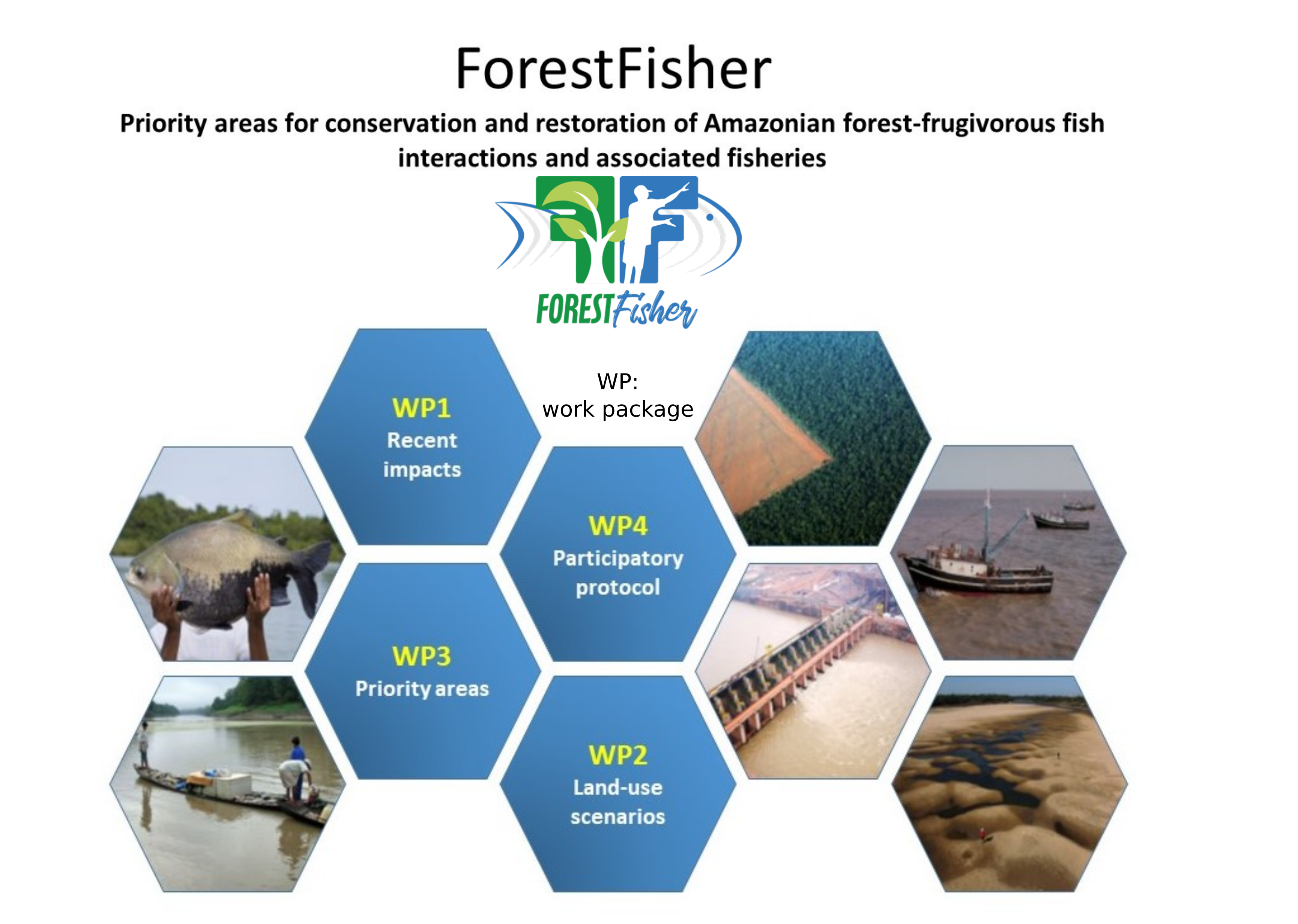Forest Fisher Project

Among Amazonian fishes, those with fruit-eating habits stand out due to their ecological and socioeconomic importance. Frugivorous fishes play a crucial role in maintaining forest diversity as seed dispersers and constitute a key source of food and income for traditional, local human populations. Furthermore, frugivorous fishes are generally large-bodied species highly appreciated for human consumption, and as a consequence, are heavily exploited by all existing fishing modalities across the Amazon.
Seed dispersal, the movement of seeds across the landscape, by fruit-eating fish represents a fundamental plant-animal interaction relevant to the maintenance of the biological and functional diversity of plant communities and ecosystems in lowland rivers. However, increased deforestation, especially in riparian areas, has threatened this mutualism and the plant species that depend on this interaction and, consequently, entire ecosystems that rely upon them. The increasing patchiness and isolation between forest fragments resulting from deforestation make seed dispersal by fish essential for riparian forest maintenance and recovery. In such conditions, it is paramount to integrate the preservation of forest-fish interactions in the context of planning new protected areas, managing existing conservation networks, and designing restoration programmes in the Amazon.
Here, the following research questions will be addressed (Project BiodivRestore-802, 2022-2025):
i) how recent land-use changes have affected the frugivorous fish diversity? (WP1);
ii) Will climate, land-use, and river fragmentation changes in the Amazon River Basin affect the availability of suitable areas for frugivorous fish species, and thereby threaten the ecosystem services that these fish populations provide? (WP2 & WP3);
iii) How will climate change driven shifts in the distribution of frugivorous fish species affect fishing communities and their traditional fishing grounds? (WP4).
The Amazon is at the centre of an ongoing intense international debate and our project offers a timely, comprehensive, and interdisciplinary approach to assess the combined effects of multiple threats on fish species that are essential to the functioning of a socio-economic system, offering food and income for traditional populations, and to the ecological processes needed for forest sustainability. From this assessment, and the inclusion of stakeholders and fishing communities, the project will finally offer an integrated strategy for the conservation and restoration of priority areas, contributing to a successful mitigation of current and future changes and to the resilience of socio-ecological systems in the region. Lastly, our project addresses a conservation gap, as most conservation efforts in Amazonia focus on terrestrial ecosystems, neglecting the importance of aquatic ecosystems as biodiversity corridors and the ecological and socio-economic relevance of fish in the region.
Follow the project on Twitter: @ForestFish11